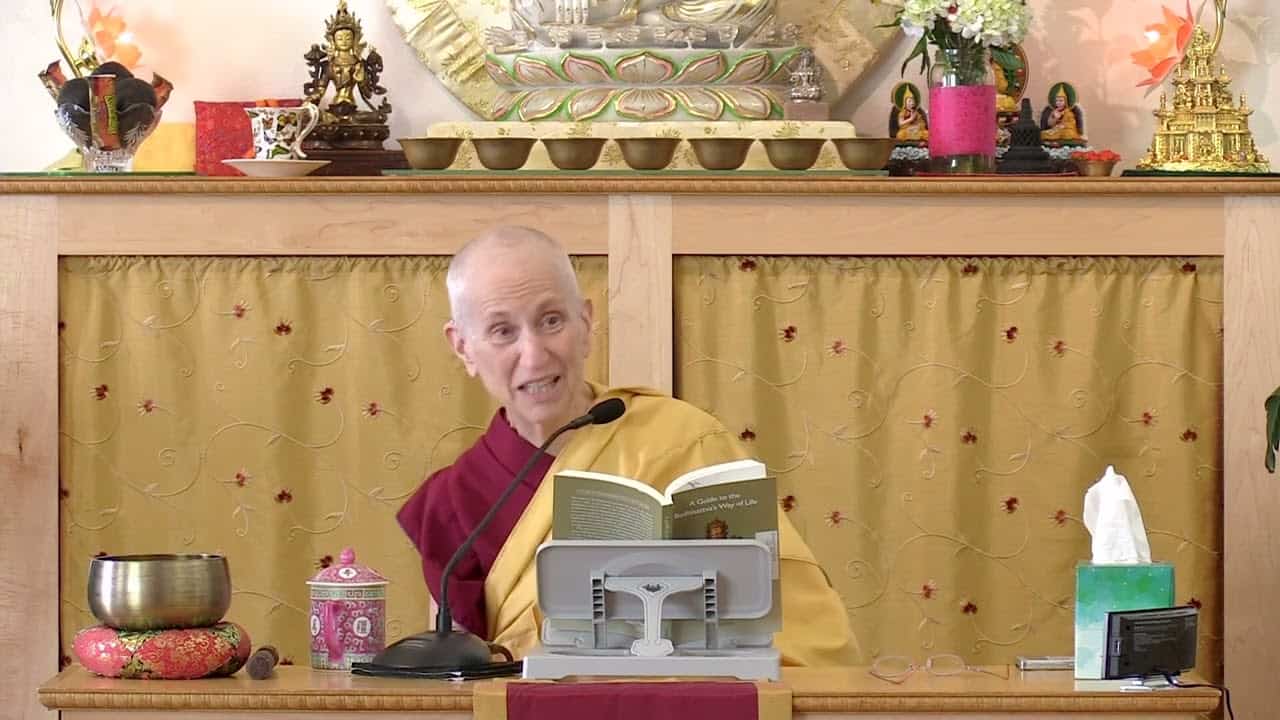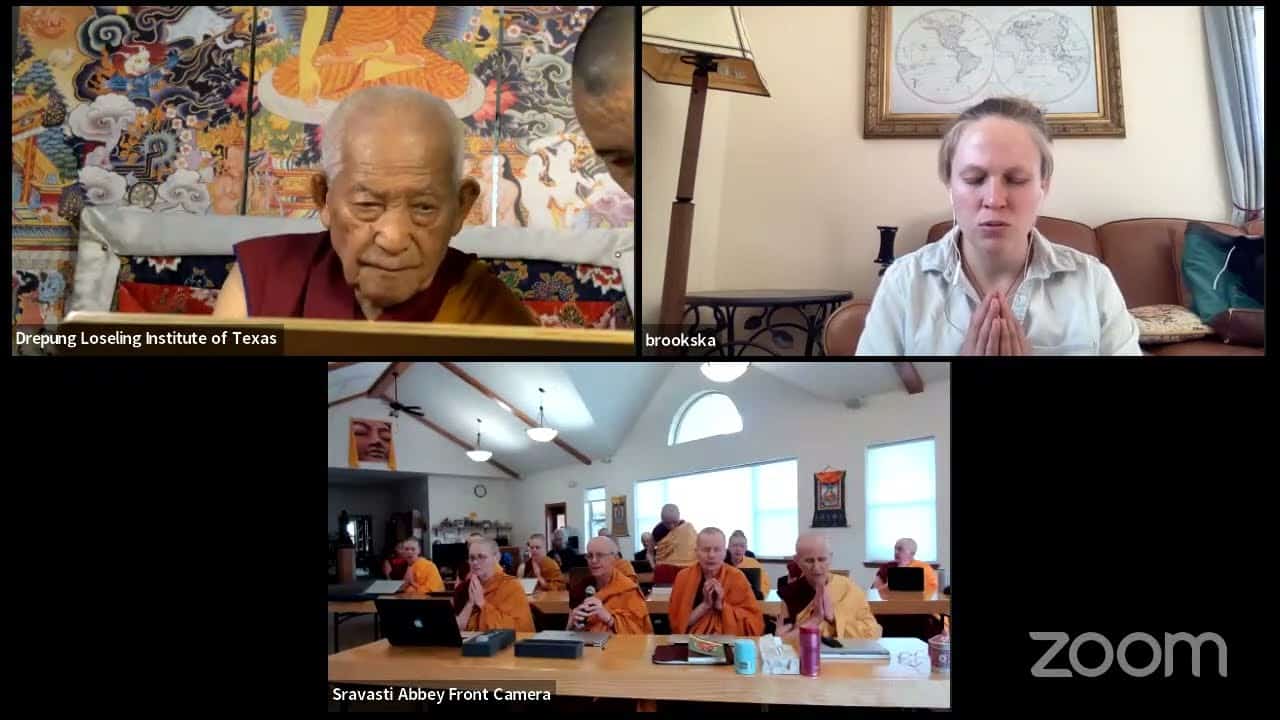Examples of how we cycle
61 Samsara, Nirvana, and Buddha Nature
Part of an ongoing series of teachings (retreat and Friday) based on the book Samsara, Nirvana, and Buddha Nature, the third volume in The Library of Wisdom and Compassion series by His Holiness the Dalai Lama and Venerable Thubten Chodron. Refer to the handouts for the teaching: 12-Links-Presentation and 12-Links-Diagram.
- Presentations of explicit and implicit models
- Example for the second scenario in the implicit presentation
- Description of the 12 links leading to rebirth from Pali commentary
- 12 links in terms of four groups
- Past causes, present results, present causes, future results
- Four groups connect at three points
- Example for the scenario from the Pali sutra
- How to avoid misconceptions about the 12 links
Samsara, Nirvana, and Buddha Nature 61: Examples of How We Cycle (download)
Contemplation points
- Ven. Chodron taught: “What we do now is choosing what kind of rebirth we have. We create causes now for future rebirth. We have a choice as we do each action in our life and create karmic seeds.” Take some time with this. How might a deeper understanding of this truth change the way you approach the activities of your day? What keeps you from making wise choices with each action in life?
- Look at your present mind. Do you have the foundations for a good future rebirth? What are they?
- Why are we not able to experience the happiness and peace that we seek in life? How can you go about achieving this in a wise way?
- Review the process of how the twelve links produce a new rebirth according to the explicit and the two implicit presentations. Make some examples of how a set of twelve links could unfold in the future. How does this reflection affect your attitude towards life?
- According to the Pali Tradition, there are two roots of samsara. What are they? Explain how they work together to perpetuate samsara and the order in which we confront them to overcome samsara.
- Consider what it means to “delight in a painful feeling.” His Holiness writes: “This indicates a per- son clings to the feeling with the thought “I” and “mine.” His sense of I gets a boost through feeling uncomfortable. He may put himself in stressful or even dangerous situations to reinforce his sense that I exist. He may even create an identity out of his pain.” Make examples of times you have experienced this in your own life.
Venerable Thubten Chodron
Venerable Chodron emphasizes the practical application of Buddha’s teachings in our daily lives and is especially skilled at explaining them in ways easily understood and practiced by Westerners. She is well known for her warm, humorous, and lucid teachings. She was ordained as a Buddhist nun in 1977 by Kyabje Ling Rinpoche in Dharamsala, India, and in 1986 she received bhikshuni (full) ordination in Taiwan. Read her full bio.


